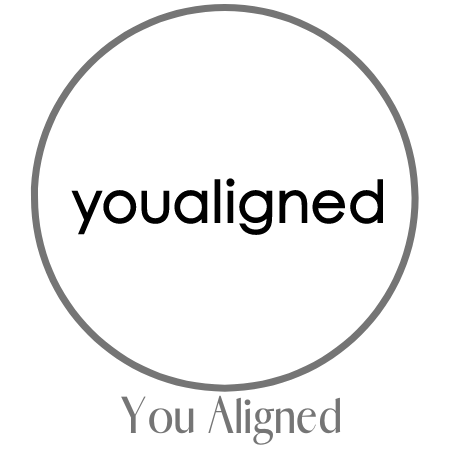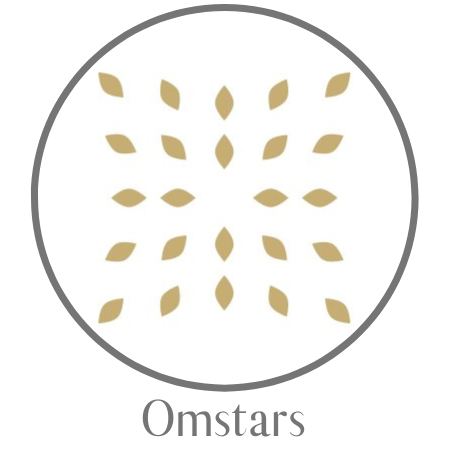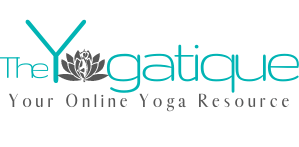
Have you ever been struggling in a yoga pose, then the teacher gave you a slight adjustment, and it suddenly felt so much better? In this article, I explain the most essential principles of alignment without any complex anatomy language so you can understand why proper alignment helps so much and feels so good.
When your yoga teacher adjusts your pose, it feels good, but not because your yoga teacher was a magician but rather because your body was misaligned! The good news is that you can learn the basics of yoga alignment by tuning in to what your teacher says and making micro-adjustments to your poses.
In yoga, a slight shift of a body part can make a massive difference. The correct alignment helps you experience the perfect balance of effort and ease in a posture. This boosts all those wonderful benefits that keep us returning to our mats.
If you want to further enhance your practice by practicing proper alignment without doing hours and hours of study, this article is for you.
Article content:
(Click any link below to jump directly to section)
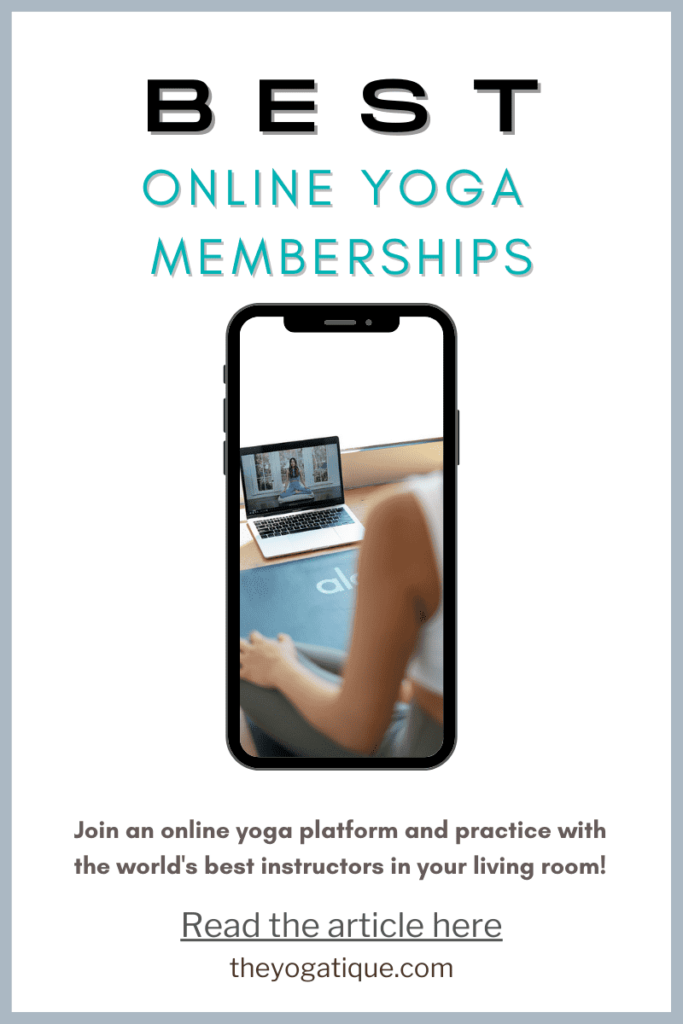
SEARCHING FOR THE BEST
ONLINE YOGA MEMBERSHIP TO JOIN?
Online Yoga Subscriptions Offer
- 1,000's of classes
- Best instructors
- Affordability
- Flexibility
⬇Click below for the best online yoga memberships ⬇
What is alignment in yoga?
Proper yoga alignment keeps you safe on the mat by protecting your joints and tissues and preventing injury and muscle fatigue. Following proper asana alignment principles helps you find a strong foundation in each asana.
Being mindful of correct functional alignment also promotes a more efficient and effective yoga practice, making your time on the may more enjoyable than exhausting!
Let's explore how practicing proper physical alignment when practicing different styles of yoga enhances your practice and the most common principles to know.
The benefits of having proper asana alignment
Proper asana alignment is fundamental to practicing yoga safely and effectively. It enhances the benefits of each pose, ensuring that the body is aligned correctly to prevent injury and promote overall well-being. Here are some of the benefits of having the right alignment in a yoga class:
- Increased body awareness – When we focus on healthy alignment, we pay more attention to the sensations in our physical bodies. This enhances proprioception and mind-body connection.
- Improved posture – By properly aligning the spine in yoga postures, we train our own body to maintain this posture in our everyday activities.
- Better balance – Proper alignment means moving from your center of gravity. This stability not only helps you hold poses for longer but helps you transition between them more smoothly.
- Injury prevention – Proper alignment keeps your body in a safe and stable position. There is less strain on ligaments, tendons, and muscles, minimizing the chances of overstretching in poses where you may be trying to improve your flexibility.
- Increased strength – Correct physical alignment allows you to engage the relevant muscles effectively in any particular pose. This helps you build more muscle strength and improve endurance without lifting weights!
7 examples of yoga alignment
Understanding and applying these seven principles of alignment to basic yoga poses is important for having a safe and effective practice. Furthermore, you can apply these principles to other poses. Here are the seven alignment principles to be mindful of in different poses:
- Hand positioning in Downward Dog
- Knee alignment in Chair Pose
- Keeping a straight spine in Seated Forward Fold
- Feet positioning in Warrior 1
- Feet position in Warrior 2
- Spinal alignment in Plank Pose
- Knee position in Tree Pose
1. Hand positioning in Downward Dog
The correct hand positioning in the Downward Dog pose prevents wrist strain and builds strength in the upper body. Hand alignment tips for Down Dog:
- Your hands should be shoulder-width apart, with the fingers spread and the index finger pointing to the top of your mat.
- Then press the knuckles down to distribute the weight more evenly; when you do this, there should be no gaps between the fingers and mat.
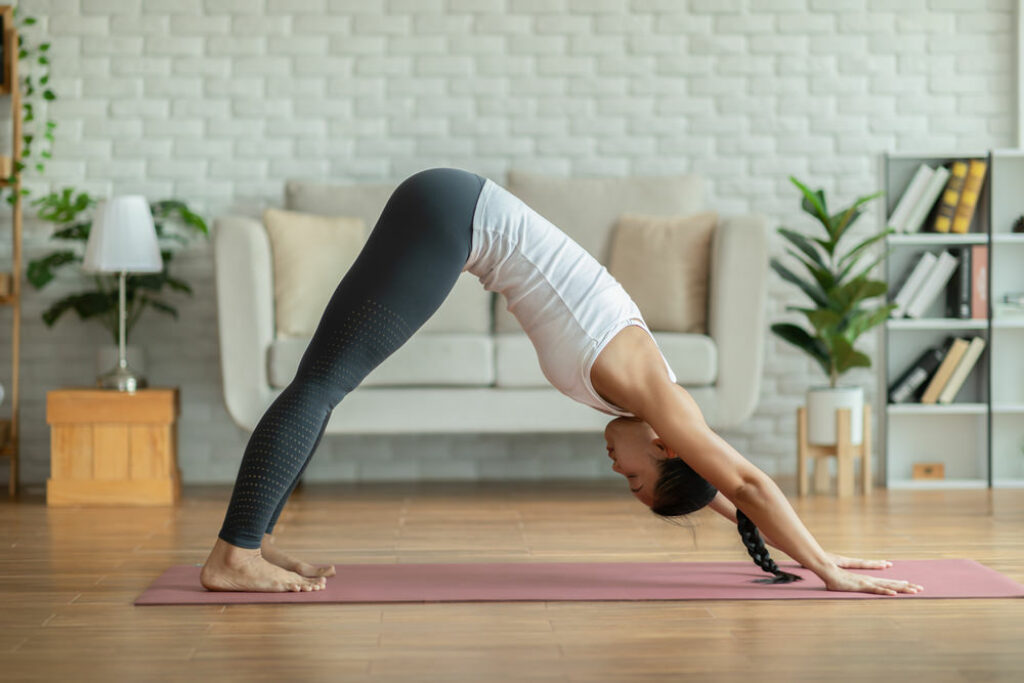
2. Knee alignment in Chair Pose
One of the most crucial alignment rules of Chair Pose is the knee position. Chair Pose alignment tips:
- As you bend your knees and sink your hips, ensure you can see your toes when you look down.
- If your knees are coming past your toes, you are putting a risk of strain on your ankle and knee joints. To avoid this, press your hips back or come up slightly.
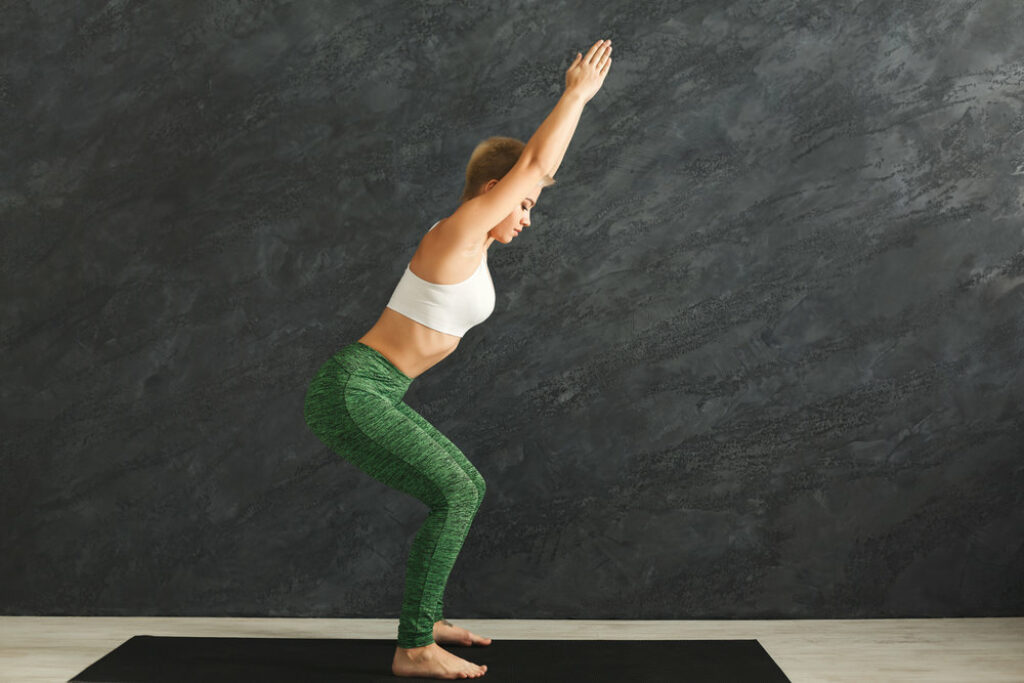
⬇Online yoga memberships you should look into⬇
3. Keeping a straight spine in Seated Forward Fold
One of the most common mistakes in a Seated Forward Fold is rounding the back. While it allows you to bring the chest closer to the spine, it compromises your posture and puts pressure on the muscles of the lumbar spine. Therefore, the safe alignment is to keep the spine straight as you fold forward. Seated Forward Fold alignment tips:
- Extend your arms up to the ceiling, bringing the upper arms aligned with the ears.
- Then, as you hinge forward from the hips, keep the arms aligned with the ears.
I also recommend slightly bending the knees if you have tight hamstrings that make it challenging to hinge from the hips.

4. Feet positioning in Warrior 1
In Warrior 1, two of the most common misalignments come from improper hip and front knee positioning. Warrior 1 alignment tips:
- Your hips should face forward with the front toes pointing forward and the back toes out to 45 degrees.
- Your front knee is bent and stacked over the front ankle, while the back leg is straight.
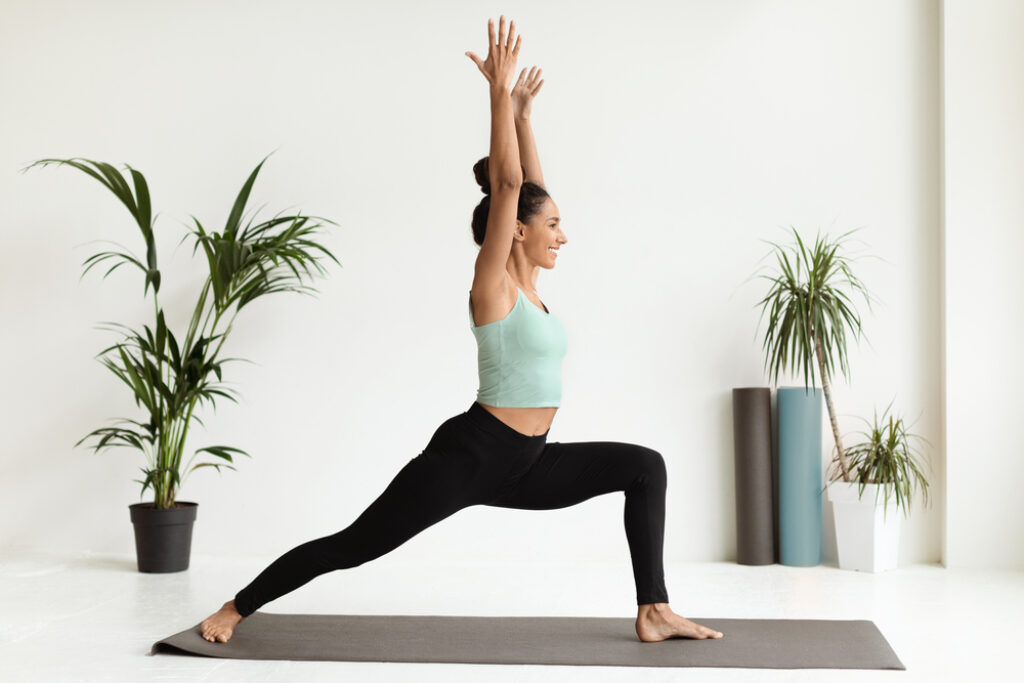
5. Feet positioning in Warrior 2
In Warrior 2, yogis commonly don't open their hips. Warrior 2 alignment tips:
- Your hips should open to the side, with the front toes facing forward and the back toes turning out to 90 degrees.
- Your front knee stacks over the ankle while the back leg remains straight, pressing the outer arch of the foot into the mat.
- For optimal alignment, the front heel should align with the middle of the arch of the back foot.
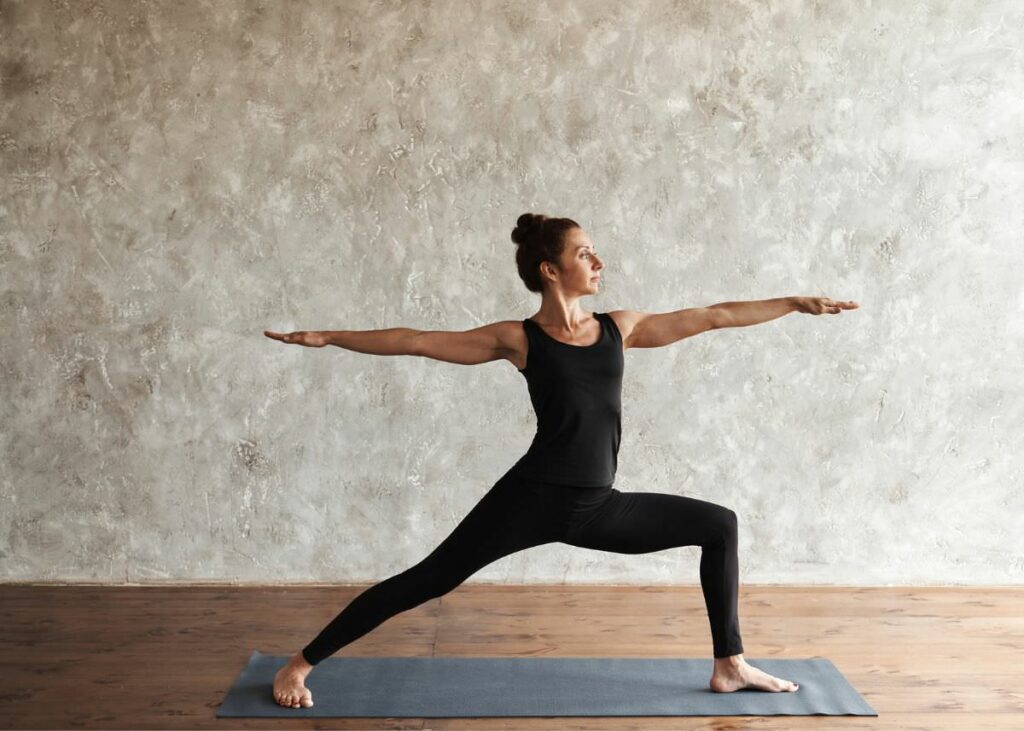
6. Spinal alignment in Plank Pose
A common misalignment in Plank Pose involves having a banana back. Plank Pose alignment tips:
- It's vital to engage your core to keep the hips aligned with the body, preventing the spine from arching.
- Your neck should be in line with the spine.
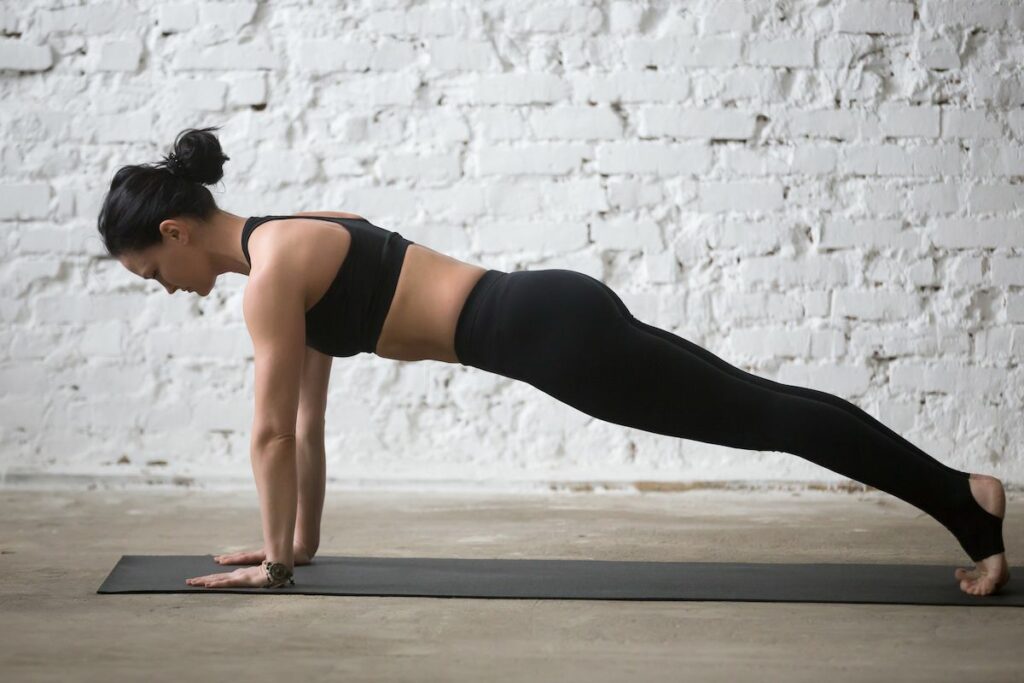
7. Knee position in Tree Pose
Along with even weight distribution of the standing foot, be cautious of the hip and knee positioning in the Tree Pose. Tree pose alignment tips:
- Point the knee of the lifted leg out to the side while the hips and chest remain facing forward.
- In addition, you should place the sole of your foot on the side of the shin or thigh, above or below the knee but not on the knee joint.

3 alignment cues every yogi should listen for in class
In class, your yoga teacher will verbally say alignment cues that are essential for a safe and effective yoga practice, helping to ensure that poses are performed correctly. Here are three cues to listen for:
1. Stacking the joints
Stacking the joints refers to aligning body parts to reduce strain and increase stability during yoga poses.
Stacking the joints is vital for protecting joint health and preventing injury. When your joints are stacked, the weight and pressure are distributed evenly. This minimizes the chance of overextension or straining.
This alignment cue also helps you find more stability. This is because when your joints are aligned, you can engage your muscles more effectively. Plus, energetically, it improves energy flow (prana) throughout the body.
2. Engaging the core
Engaging the core is a common cue and is particularly crucial in backbends and inversions. When you tighten your abdominal muscles, you protect your lower back and neck from straining as you lean back.
Moreover, in inversions, core engagement helps you lift your chest and legs off the ground and builds core strength.
In standing and seated poses, engaging the core helps you find a neutral spine, preventing slouching or overarching.
3. Weight distribution
In all standing poses, weight distribution is vital. Distributing your body weight helps reduce muscle fatigue and improves balance and stability.
By spreading the weight evenly across both feet, you'll find your center of gravity, which prevents you from leaning to one side.
The foundational standing pose, Tadasana (mountain pose), is a great asana to learn weight distribution.
Takeaway
While body alignment in yoga is a complex topic, you don't need to complete a 200-hour teaching training to understand the basics. Whenever you come to your mat, remember the three most important principles – stack the joints, spread your body weight evenly, and engage your core!
Some online yoga studios, online yoga teacher training programs, and brands that we write about may offer us a small commission should you decide to make a purchase or signup after reading our content. Thank you for enabling us to exist!



